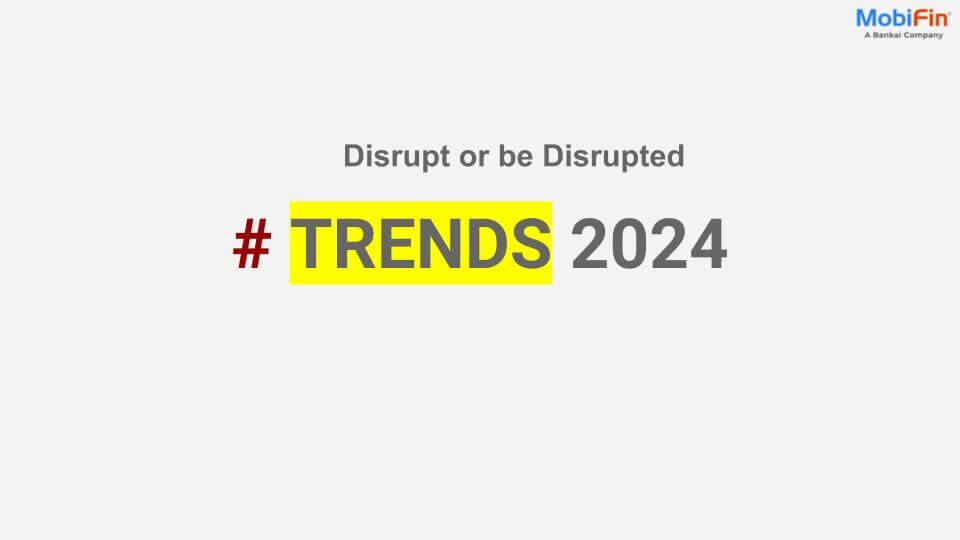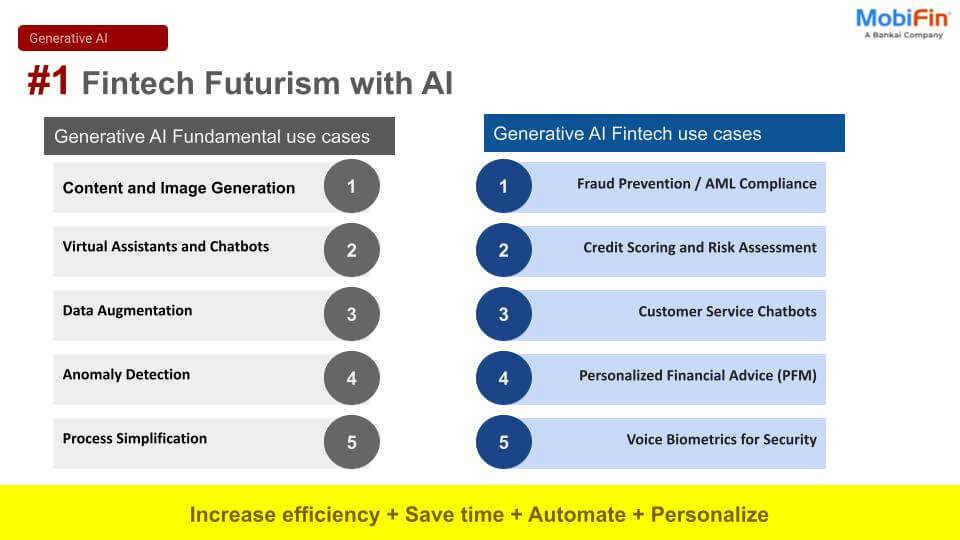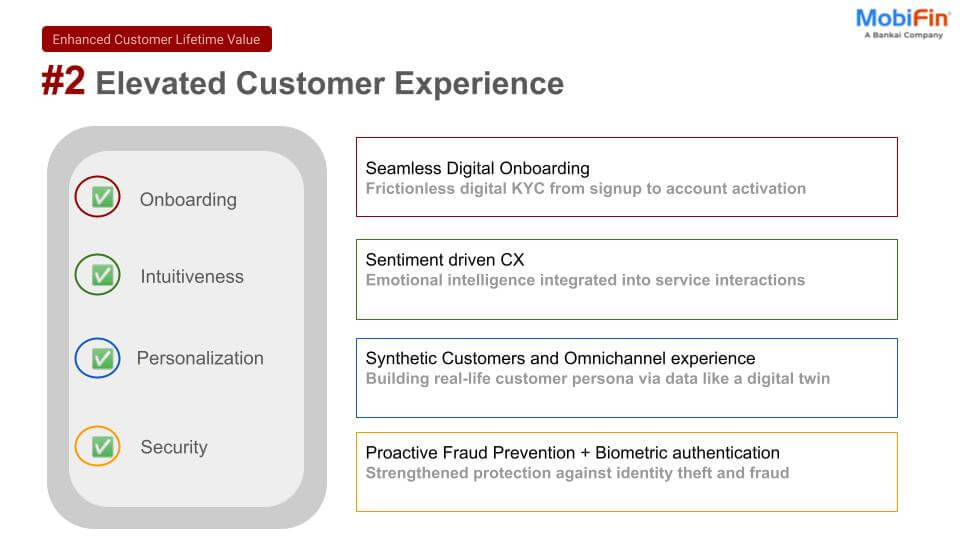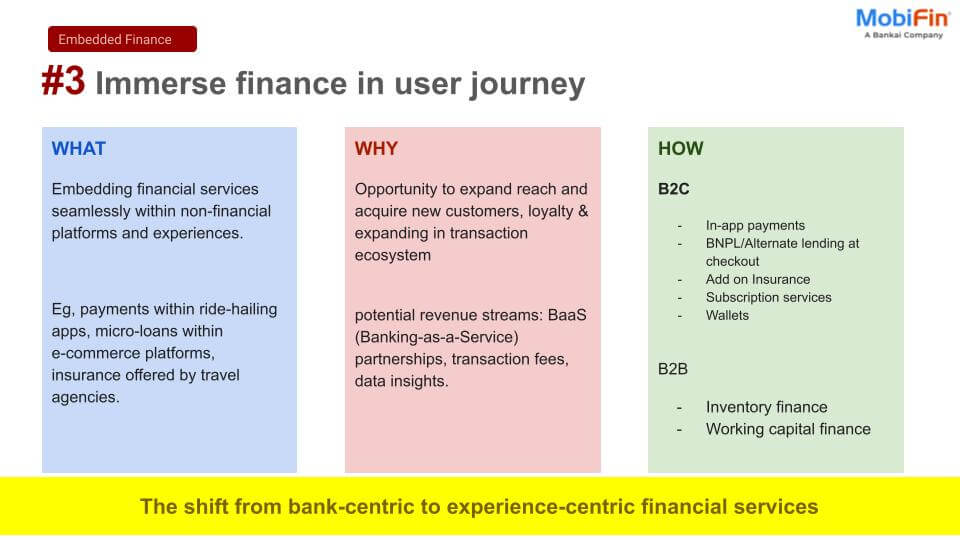The age of AI in finance: It’s more than a buzzword—It’s the future
Artificial intelligence (AI) is rapidly becoming the backbone of modern financial systems. It is revolutionizing customer service, risk management, and operational efficiency. The time for skepticism is over, AI is here, and it’s transforming financial services at an alarming pace.
If you’re still debating whether to implement AI, you’ve already fallen behind. AI-powered virtual assistants, fraud detection, and automated loan approval systems are no longer experimental technologies; they’re becoming industry standards. McKinsey reports of 2024 states that, AI will improve the profitability of financial institutions by up to 20%.
This isn’t a distant future; it’s already happening.
Use Case: Automated Loan Processing Institutions like JPMorgan Chase are using AI to automate mundane tasks such as document review and risk analysis. In doing so, they’ve slashed operational costs while improving accuracy. Smaller banks that hesitate to invest in AI are not just missing out on savings—they’re ignoring the operational efficiency that’s becoming table stakes.
Stat: In 2023, global spending on artificial intelligence reached $166 billion, with the banking industry contributing 13% of this figure. By 2027, AI spending is expected to rise to approximately $450 billion, according to a report by International Data Corp. (IDC), a provider of technology market intelligence and advisory services.
Blockchain isn’t just a trend—It’s an industry standard in the making
The promise of blockchain has shifted from speculation to real-world applications, particularly in cross-border payments and financial security. Its decentralized nature has proven capable of revolutionizing financial processes by eliminating intermediaries and drastically reducing transaction times.
Traditional systems built on intermediaries are inherently slower, more expensive, and less secure. Blockchain is disrupting this model by offering a transparent, secure, and nearly instantaneous alternative. PwC estimates that 77% of financial institutions will have adopted blockchain by 2025
What’s your institution doing to keep up?
Use Case: Cross-Border Payment Platform Financial giants have adopted blockchain technology to streamline cross-border payments, reducing settlement times from days to mere seconds. In a world where speed and transparency are critical, blockchain isn’t just an improvement—it’s a necessity.
Stat: Cross-border blockchain payments will grow from $16 billion in 2024 to $37 billion by 2030
Mobile and digital banking
If your institution isn’t mobile-first, you’re alienating a massive market segment. By 2025, mobile banking users are expected to reach 3.5 billion
The shift to mobile is not a temporary trend fuelled by the pandemic but a permanent change in how consumers interact with financial services. Traditional Banks Will Lose Their Relevance if They Don’t Go Fully Digital.
While traditional banks still rely on brick-and-mortar branches, digital-first banks offer mobile solutions that provide real-time transactions, low fees, and an intuitive user experience. These digital disruptors are not just offering services; they’re winning customer loyalty with their seamless experiences.
Use Case: Mobile-first payment solution has become a lifeline for millions of unbanked individuals in Africa, offering payments, savings, and even lending. It’s proof that mobile solutions aren’t just convenient—they’re life-changing, especially in regions where traditional banking infrastructure is limited.
Stat: Digital wallet transactions will rise from $9 trillion in 2023 to $16 trillion by 2028
Open banking: The key to personalization and customer retention
Open banking enables third-party providers to access financial data, allowing for a more integrated and personalized banking experience. It’s not just a compliance obligation—it’s a competitive advantage. Financial institutions that don’t embrace open banking risk losing out to fintechs that can offer customers more personalized and valuable services.
Consumers are increasingly demanding transparency, control, and personalization. Open banking is the vehicle that allows financial institutions to provide this. The EU’s PSD2 regulations and other global initiatives have set the standard, and the global market is following suit. If your institution resists sharing customer data securely, you are missing out on new revenue streams and customer loyalty.
Use Case: Open banking allows users to connect their bank accounts to third-party apps like Venmo, facilitating instant verification and reducing onboarding friction. With financial institutions moving toward API-driven ecosystems, the days of proprietary systems are numbered.
Stat: The global open banking market size was estimated at USD 25.14 billion in 2023 and is expected to grow at a CAGR of 27.4% from 2024 to 2030.
Conclusion: The future is now – MobiFin can get you there
The message is clear: Financial institutions can no longer afford to sit on the sidelines of innovation. AI, blockchain, mobile banking, and open banking aren’t just the future—they’re the present. The longer traditional players wait to adopt these technologies, the harder it will be to remain competitive.
At MobiFin, we understand the complexities of adapting to this new landscape. Our cutting-edge digital banking solutions, powered by AI enable financial institutions to embrace the future without sacrificing security, compliance, or customer satisfaction. Whether it’s streamlining operations, enhancing customer experiences, or integrating open banking APIs, MobiFin is your partner in digital transformation.
Don’t get left behind – innovate today to lead tomorrow.













